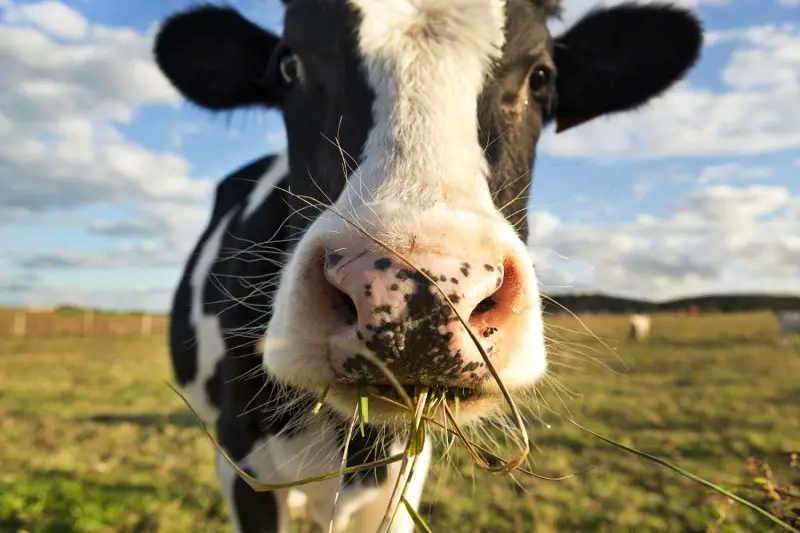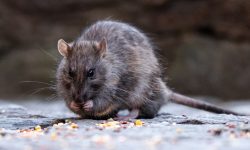Cows are some of the most iconic grazing animals on Earth, known for their calm nature and vital role in agriculture. Their diet is mostly plant based, but it is far more diverse and complex than many people realize. Understanding what cows eat provides insight into their health, milk production, and overall well being.
In natural environments, cows roam freely across pastures, selecting the freshest grasses and plants they can find. This instinctive grazing behavior supports their unique digestive system, which relies heavily on fiber rich foods. Domestic cows still follow many of these natural patterns, but their diets often include extra supplements for balanced nutrition.
A healthy cow diet is a careful combination of forage, fiber, minerals, and energy rich foods. Whether cows are raised for milk, beef, or as working animals, the quality of what they eat directly influences their growth, temperament, and productivity. This detailed guide explores 20 foods cows love most and why each one plays an important role.
Understanding the Cow Diet

How Cows Digest Food
Cows are ruminants, meaning they have a four chambered stomach designed specifically for breaking down fibrous plant materials. Their rumen houses billions of microorganisms that ferment grass and hay into usable nutrients. This efficient digestive system allows them to thrive on foods that many animals cannot digest.
What Cows Eat in Natural Habitats
In the wild or on open pastures, cows graze on a wide range of grasses, herbs, and shrubs. Their natural diet consists mainly of high fiber plants that keep their rumen functioning properly. They eat slowly and continuously throughout the day, taking in small meals rather than large portions at once.
Why Forage Matters
Forage is the backbone of a cow’s diet. Fresh grasses, hay, silage, and legumes all supply the long fibers cows need for healthy digestion. Without enough forage, cows can develop digestive issues such as bloating or acidosis. A balanced diet helps cows produce more milk, maintain strong muscles, and stay active and healthy.
20 Foods Cows Love the Most
1. Grass
Grass is the primary food source for cows and the foundation of their diet. It provides essential fiber that keeps the digestive system functioning smoothly. Cows instinctively graze for hours each day, selecting tender, nutrient rich blades.
Pasture grasses such as fescue, ryegrass, Kentucky bluegrass, and timothy supply natural energy, vitamins, and minerals. These grasses vary by season, offering cows a constantly evolving buffet of flavors and nutrients.
Grazing also supports cow well being by encouraging natural movement, reducing stress, and improving overall health.
2. Hay
Hay is dried grass or legumes that cows eat when fresh pasture is unavailable. It retains much of the nutritional value of live plants, making it an essential year round feed. Good quality hay is green, fragrant, and free from mold.
Cows rely heavily on hay during winter months or drought conditions. It keeps their rumen active and provides consistent fiber for proper digestion. With enough hay, cows maintain steady weight even when pasture is limited.
Farmers often choose timothy hay, orchard hay, or alfalfa hay depending on the nutritional needs of their herd.
3. Alfalfa
Alfalfa is one of the most nutrient dense forages available to cows. Rich in protein, fiber, and calcium, it supports healthy bones, milk production, and muscle development. Dairy cows especially benefit from alfalfa as part of their daily diet.
Its soft texture and mild flavor make it appealing even to picky cows. Alfalfa hay can be fed alone or mixed with grass hay to balance energy levels and prevent excess protein intake.
Whether fresh or dried, alfalfa remains one of the best natural foods for boosting cow performance and health.
4. Clover
Clover is a favorite among grazing cows thanks to its sweet taste and high nutrient content. This legume is rich in protein, calcium, and essential vitamins that support growth and reproduction.
Red and white clover varieties grow abundantly in pastures, providing cows with flavorful and highly digestible forage. Clover mixes well with grasses, creating a balanced pasture that supports rumen health.
Because clover can lead to bloating if overconsumed, it is best grazed alongside plenty of fiber rich grasses.
5. Silage
Silage is fermented forage made from chopped grasses, corn stalks, or legumes. It is preserved airtight, allowing natural fermentation to boost flavor and nutritional availability.
Cows enjoy silage because of its moist, slightly sweet aroma. It provides high energy and is particularly valuable for dairy cows needing extra calories for milk production.
Silage remains a dependable feed during winter and helps farmers store large quantities of nutrient dense forage for year round use.
6. Corn
Corn is a common energy rich food that supports weight gain and milk output. Cows may eat whole kernels, cracked corn, or corn mixed into feed rations.
Corn provides carbohydrates that help cows maintain body heat and energy during cold weather. When fed in moderation, it complements forage based diets and boosts overall productivity.
Farmers must balance corn with adequate fiber to prevent digestive upsets, but as an energy source, it plays an important role.
7. Oats
Oats are a safe, digestible grain that cows enjoy both in ground and whole form. They provide slow release energy that supports steady growth and healthy rumen function.
This grain is especially useful for young calves or lactating cows needing extra calories. Oats blend well with other feed ingredients and are easy to integrate into balanced diets.
Their mild flavor and high fiber content make them an appealing and nutritious grain option.
8. Barley
Barley offers more energy than oats and is often used in cow feed for its rich carbohydrate profile. It supports milk production and helps cows maintain body condition during demanding seasons.
Crushed or rolled barley improves digestibility, making nutrients more accessible. Many farmers use barley mixtures to provide consistent energy levels throughout the day.
When paired with high fiber forage, barley becomes a reliable and balanced energy source.
9. Wheat
Wheat can serve as a concentrated energy source for cows when processed correctly. Ground or rolled wheat is easier to digest and less likely to cause digestive issues.
Cows benefit from wheat as part of a mixed feed ration rather than a standalone food. It provides protein and starch that support growth and activity.
With proper management, wheat becomes a valuable grain that enhances a cow’s overall nutrient intake.
10. Vegetables
Cows enjoy a wide range of vegetables such as carrots, pumpkins, beets, and squash. These vegetables offer natural hydration, vitamins, and antioxidants that support immune health.
Root vegetables provide extra energy during winter, while leafy greens contribute fiber and mineral balance. Many farmers feed leftover or imperfect vegetables to reduce waste.
Vegetables must be introduced gradually to prevent digestive upsets, but they make excellent supplemental foods.
11. Fruits
Fruits like apples, pears, melons, and bananas are tasty treats for cows. Their natural sugars provide quick energy, while fiber and vitamins support overall health.
Cows particularly enjoy crisp apples and juicy melons during summer when hydration is crucial. Fruit should be fed in moderate amounts to avoid excessive sugar intake.
Seasonal fruits become a refreshing addition to a cow’s diet and encourage natural foraging behavior.
12. Beet Pulp
Beet pulp is a fiber rich byproduct of sugar beet processing. After soaking, it becomes soft and highly digestible, making it ideal for cows needing extra calories without heavy grain intake.
It supports milk production and helps maintain rumen health by providing gentle, fermentable fiber. Many farmers use beet pulp to supplement winter feed.
Its mild sweetness and consistent texture make it a reliable and palatable feed source.
13. Soybeans
Soybeans offer protein rich nutrition that supports muscle growth and milk production. Soybean meal is commonly included in balanced feed rations for dairy herds.
Roasted soybeans are also an excellent energy source due to their natural fat content. Cows digest processed soy better than raw soy.
As part of a controlled diet, soy helps keep cows strong, energetic, and productive.
14. Minerals and Salt
Mineral blocks and loose salt mixes provide essential nutrients that forage alone cannot supply. These minerals include calcium, phosphorus, magnesium, and trace elements vital for bone health and milk production.
Cows instinctively seek salt to regulate hydration and digestion. Salt also supports nerve and muscle function.
Providing mineral supplements ensures cows meet their daily nutritional needs and prevents mineral deficiencies.
15. Molasses
Molasses adds moisture and sweetness to cow feed, making dry grains and hay more appealing. It is high in energy and helps cows maintain appetite during stressful periods.
Mixed with pellets or forage, molasses improves palatability and boosts calorie intake. This makes it especially useful for young or recovering cows.
Because it contains sugar, molasses is fed sparingly but remains a valuable supplement.
16. Grass Pellets
Grass pellets are compressed forage that provides consistent nutrition in a convenient form. They contain chopped grasses dried and pressed into small cylinders.
These pellets are useful during winter or drought when fresh pasture is unavailable. Cows can easily chew and digest them, maintaining fiber intake even with limited grazing.
Grass pellets help stabilize feeding routines and prevent nutritional gaps.
17. Tree Leaves
Cows sometimes browse tree leaves such as willow, mulberry, and poplar when given access. These leaves provide fiber, moisture, and trace minerals.
Tree leaves are particularly valuable during dry seasons when pasture growth slows. They offer variety and encourage natural foraging behaviors.
However, cows must avoid toxic trees like cherry or yew, which can harm their digestive system.
18. Browse Shrubs
Shrubs like blackberry, honeysuckle, and wild rose offer tender shoots and leaves that cows enjoy. Browsing these shrubs diversifies their diet and encourages natural behaviors.
Shrub consumption also provides additional nutrients that may be missing from grass alone. The fibrous stems help promote dental wear and digestive function.
In well managed pastures, shrubs help maintain ecological balance and offer nutritious supplement foods.
19. Weeds
Weeds such as dandelion, clover, plantain, and chicory are surprisingly nutritious and favored by grazing cows. They provide vitamins and minerals not always found in common grasses.
Many weeds grow rapidly and stay tender, making them excellent forage options throughout the grazing season.
By naturally controlling weeds, cows help maintain pasture health while enjoying diverse feed sources.
20. Fresh Water
Although not a food, water is the most important part of a cow’s daily diet. Cows need large amounts of clean water for digestion, milk production, and temperature regulation.
A single cow may drink 20 to 30 gallons per day depending on heat, milk output, and activity level. Fresh water ensures proper rumen function and overall well being.
Without adequate hydration, cows quickly lose appetite, energy, and productivity, making water an essential daily resource.
FAQs About What Cows Eat
Do cows only eat grass?
No. Although grass is their primary food, cows also eat hay, grains, silage, vegetables, and mineral supplements depending on their needs.
What foods are dangerous for cows?
Cows should never eat moldy feed, toxic plants, cherry leaves, yew, or large amounts of rapidly fermenting grains.
Can cows eat fruits?
Yes. Cows enjoy fruits such as apples and melons, but fruits should be fed in moderation due to their natural sugar content.
Why do cows need so much fiber?
Fiber keeps the rumen working properly, promoting healthy digestion and preventing issues like bloat or acidosis.
What do dairy cows eat differently?
Dairy cows consume more energy rich foods such as corn, alfalfa, and silage to support high milk production.
Can cows eat kitchen scraps?
Small amounts of vegetable scraps are fine, but cows should never eat processed or salty human foods.
Do cows need salt blocks?
Yes. Salt and mineral blocks provide essential nutrients that support hydration, bone health, and milk production.
What do cows eat in winter?
They rely mainly on hay, silage, pellets, and supplements when fresh pasture is unavailable.
How often do cows eat?
Cows graze or chew cud for 6 to 10 hours a day, eating small, frequent portions.
Are cows picky eaters?
Cows are selective grazers and often choose the freshest, most tender plants in a pasture.
Final Thoughts
Cows thrive on a diverse diet built around fiber rich forage, balanced grains, minerals, and seasonal treats. Whether grazing freely or being fed on farms, their nutritional needs are closely tied to their digestive system and overall well being.
Understanding what cows eat helps support healthier herds, better milk production, and more sustainable farming practices. When cows receive the right balance of food and care, they remain strong, productive, and harmonious with the environments they help shape.






